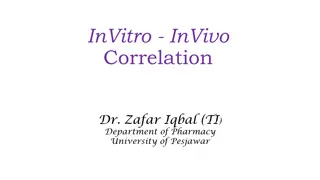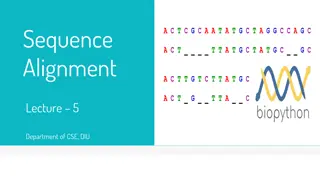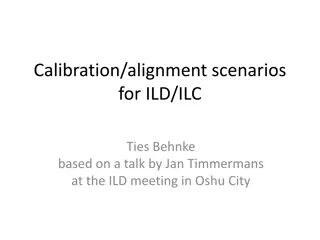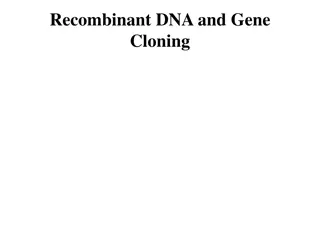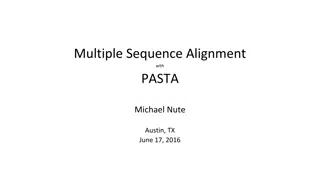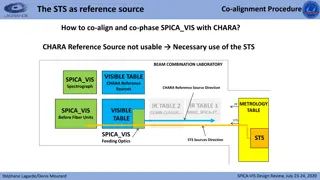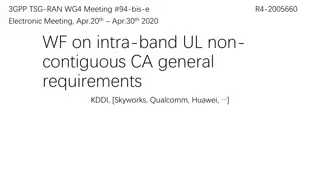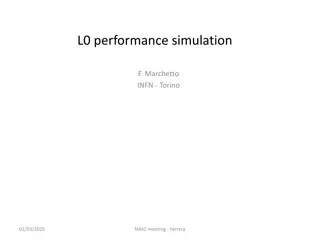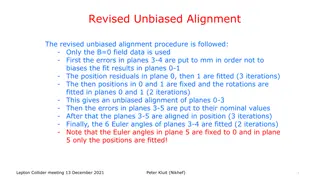
Understanding Feature Alignment for VFL Functionality
Explore the significance of feature alignment in VFL, where measurable properties of samples serve as input for ML models. Discover how the registration and negotiation of feature information contribute to efficient feature alignment.
Download Presentation

Please find below an Image/Link to download the presentation.
The content on the website is provided AS IS for your information and personal use only. It may not be sold, licensed, or shared on other websites without obtaining consent from the author. If you encounter any issues during the download, it is possible that the publisher has removed the file from their server.
You are allowed to download the files provided on this website for personal or commercial use, subject to the condition that they are used lawfully. All files are the property of their respective owners.
The content on the website is provided AS IS for your information and personal use only. It may not be sold, licensed, or shared on other websites without obtaining consent from the author.
E N D
Presentation Transcript
S2 S2- -240XXXX 240XXXX Discussion on the VFL feature alignment SA2#166 OPPO 1
Status for the feature registration and alignment The following editor s notes are captured in TS 23.288 or approved CR: Editor's note: Details regarding features alignment functionality or whether the functionality needs to be specified are FFS. (CR: 2411195 KDDI; Clause 5.4) Editor's note: Whether additional selection criteria are required is FFS (e.g. vendor information and feature related information). (CR: 2411193 vivo; Clause: 6.2H.2.1.2) Editor's note: Details of ML Model handling, supported features, Feature alignment are FFS. (CR: 2411193 vivo; Clause: 5.2) Editor's note: Whether the VFL Interoperability information (e.g. type of supported VFL training method(s), vendor information, and feature related information) needs to be part of the NF profile registered in NRF is FFS. (CR: 2411193 vivo; Clause: 5.2) Observation Based on the above ENs, two issues need to be considered. 1. Whether and how to register the feature related info to the NRF and consider the feature info for each client when perform the VFL client discovery? 2. Whether the feature related info need to be negotiated between the server and clients during the preparation phase to perform the feature alignment? 2
What is the feature means and the needed for the Feature alignment Feature is a measurable property of some sample that is used as input for a ML model for training and inference For example, for the existing Observed Service Experience related network data analytics, in order to support the request Service Experience analytics for a UE or for a group of UE, many parameters from different entity(e.g. AF, AMF, SMF, UPF) for the UEs are considered. UE is the sample and the different parameters for that UE will be treat as the feature of that sample. Some of the parameters can be collected and provided by different NWDAFs and AFs, therefore, the parameters may have overlap in different entities. VFL need the different entities have the same samples but different feature. The feature alignment is needed. 3
Feature info register to the NRF Case 1 Only the feature info register to NRF is enough to support the feature alignment Considering the feature is a sensitive information, and it is vender specific information, a feature ID could be used to represent the feature info supported by different entity. Feature ID is a vender specific information. Feature ID will be register to the NRF which will be a part of the VFL interoperability information in order to let different venders (which are interoperable between each other) can understand what the feature ID means. Server can based on the discovery procedure to get the feature info supported by the discovered entity and determine which feature will be used. 4
Feature alignment based on the negotiation Case 2 The feature alignment is based on the negotiation between the different entities Considering the feature maybe dynamic and it is related to the sample. Register to the NRF may cause NRF overload and need frequent update. Feature info should be negotiated between the VFL server and VFL client. VFL server will send the feature alignment request to the client which include the target feature information. Client will response to the Server what feature the client can supported. 5
Combine both case 1 and case 2 Case 3 The feature alignment is based on the registration and discovery and further negotiated between the different entities Different VFL client can register to the NRF with the feature ID based on historic data it can be collected. Feature ID is a part of the VFL interoperability info. Consider the feature ID is based on the historic feature info, it maybe quite stable. Since the feature ID can only reflect what the feature the entity can support to be collected in the historic. It can not ensure for the current VFL operation, those feature can be collected. Therefore, only depend on the feature ID register in the NRF is not enough to support the feature alignment. After performing the VFL client discovery base on the feature ID, server sends the VFL preparation request to the client which include the target feature information represented by the feature ID. Client will response to the server what feature the client can supported with the feature ID. 6
Companies views for case 1,2,3 Compani es Case 1 (feature ID registration) Case 2 (feature info negotiation) Case 3 (Combine) Other case Preferred. VFL client can register to the NRF what the feature it can support to be collected using the feature ID. It will help the server to first select the client which can possibly provided the target feature. Then based on the negotiation, server and client can align the current feature used by different entity. OPPO Strong concern. Not clear about the definition of feature ID, is it generic like(SM MM related feature or refer to some specific parameter?). If it refers to some specific feature then too many feature ID will be registered to NRF( lots of input data for every analytics defined in TS 23.288). The static feature used is highly depends on the output of ML Model and the type of ML Model, if the type of ML Model or the output of ML Model changed, the static feature registered to NRF may also change, therefore it is dynamic. ZTE Object(feature is dynamic) Can accept as a way forward See left. Huawei Not clear how to define feature ID. Have privacy issue. This can be solved by configuration/interopera bility information. Or follow similar approach as HFL (using Event ID) Preferred, but with more clarification. 1) If feature ID/info is vendor specific (no matter standardized or not), firstly vendor ID is mandatory to be included as VFL feature interpretability info during registration. 2) Whether to register feature ID to NRF depends on the feature ID is 3GPP standardized or non-standardized: - If standardized, then it is workable (event ID may can be reused) - If totally non-standardized, then it s better only to be interacted as private info between server and client (as case 2), not register to NRF - If semi-standardized, for example, just like IP packet, the header of feature vivo 7
Way forward Depending on the outcome for the companies views in page 7 8



